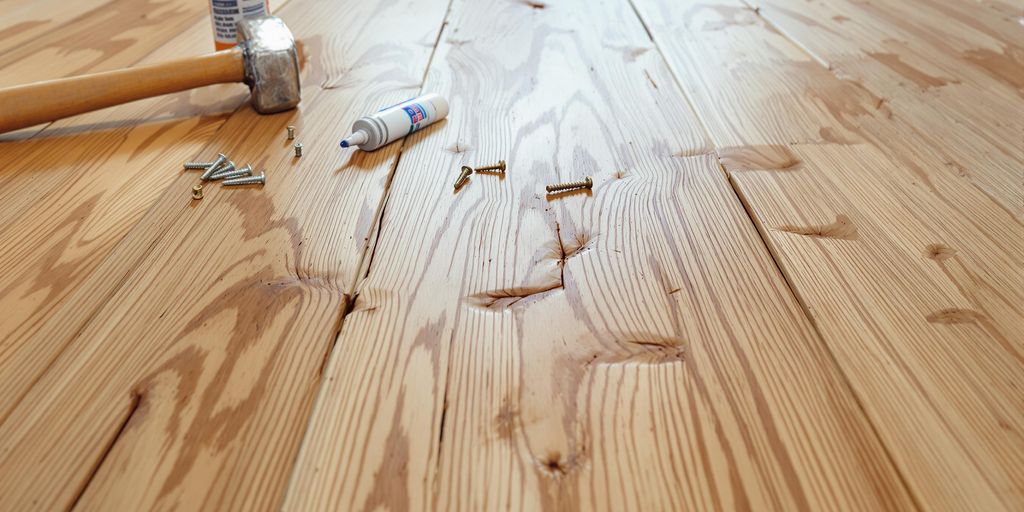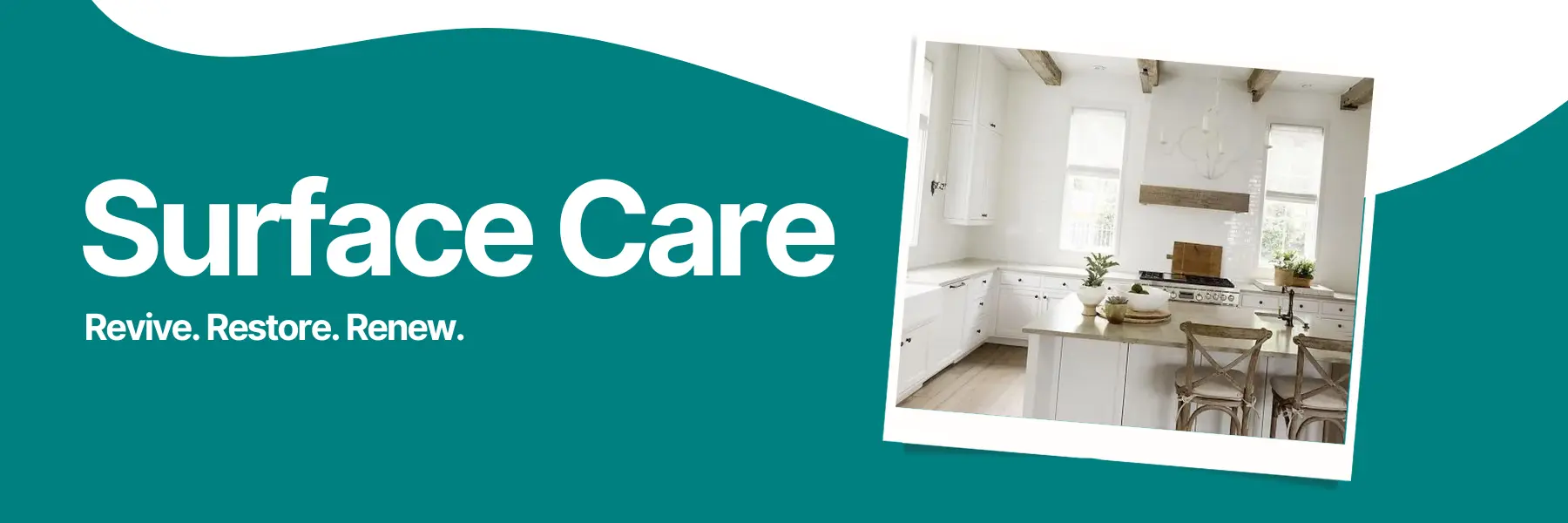Table of Contents
Creaking floors can be a real headache, can’t they? Whether it’s that one spot in the hallway that always groans or a whole room sounding like it’s haunted, those little noises can drive you up the wall. But don’t worry, fixing them isn’t as hard as you might think. In this guide, we’ll walk you through the causes, DIY fixes, and ways to prevent creaks in the future. Plus, we’ll help you figure out when it’s time to call in the pros. Let’s get started on how to repair creaking floors and bring some peace back into your home.
Key Takeaways
- Creaking floors are usually caused by loose floorboards, changes in humidity, or issues with the subflooring.
- Simple DIY fixes include tightening boards, applying lubricants, or reinforcing the subfloor.
- To avoid future creaks, maintain steady humidity levels, clean regularly, and choose durable flooring materials.
Understanding the Causes of Creaking Floors

Common Reasons for Floor Creaks
Creaking floors can be a real annoyance, and they often stem from a few key issues. One of the most common culprits is loose floorboards. Over time, nails or screws holding the boards in place can loosen, allowing the boards to shift and rub against each other. This friction creates that unmistakable squeaky sound. Another cause is wear and tear—years of use can lead to gaps forming between boards, which also contribute to the noise.
Additionally, the subfloor itself can play a role. If the subfloor isn’t securely attached to the joists, it can move slightly when stepped on, resulting in creaks. Improper installation or ageing materials can exacerbate this problem.
How Humidity Affects Wooden Floors
Humidity is a sneaky factor when it comes to creaky floors. Wood naturally expands and contracts with changes in moisture levels. In humid conditions, floorboards can swell, while in drier conditions, they may shrink and leave gaps. These shifts can lead to creaking as the boards rub against each other or the nails holding them in place loosen.
Maintaining consistent indoor humidity levels—ideally between 30% and 50%—can help mitigate these issues. For homes with persistent humidity problems, investing in a dehumidifier or humidifier might be worth considering. Excessive moisture can also lead to more severe problems, such as water accumulation beneath floors, which can weaken the structure over time.
The Role of Subflooring in Noise Issues
The subfloor is the unsung hero of your flooring system, but when it’s not up to par, it can cause a lot of noise. If the subfloor isn’t properly secured to the floor joists, it can shift slightly under pressure, leading to creaking. Older homes are particularly prone to this issue, as materials degrade over time.
In some cases, the type of subfloor material used can also make a difference. Plywood subfloors, for example, might warp or loosen more easily than modern engineered materials. Reinforcing or replacing weak subflooring can often solve long-standing creaking problems.
DIY Solutions for Fixing Creaking Floors
Using Lubricants to Reduce Friction
A quick and simple way to tackle minor squeaks is by using lubricants. Sprinkle talcum powder, powdered graphite, or a lock lubricant into the gaps between floorboards. Then, walk over the area to help the powder settle into the cracks. This reduces the wood-on-wood friction that often causes those annoying creaks. Keep in mind, though, this is more of a temporary fix and might need reapplication over time.
Tightening Loose Floorboards Effectively
Loose floorboards are a common culprit behind floor squeaks. To address this, locate the squeaky board and secure it with screws or nails. For a more seamless look, countersink the screws and cover the holes with wood putty, allowing it to dry before lightly sanding. If you’re dealing with creaks under carpet, consider using PVA or silicone adhesive between the boards and joists to cushion movement and silence the noise.
Reinforcing Subflooring for Long-Term Silence
If the issue lies deeper, it might be time to reinforce the subfloor. This involves adding wood blocks or steel bridging between the joists to stabilise the structure. Cut the blocks to match the joists and secure them with screws and construction adhesive for added durability. Another option is using specialised hardware like the Squeak-Ender, which pulls the subfloor snugly against the joist, eliminating movement and noise. While this can be a bit more labour-intensive, it’s a solid long-term solution for persistent squeaks.
Addressing creaking floors doesn’t have to be overly complicated. With a mix of quick fixes and more robust solutions, you can restore peace to your home without breaking the bank.
Preventative Measures to Avoid Creaking Floors
Maintaining Optimal Humidity Levels
Wooden floors are sensitive to humidity changes. When the air becomes too dry or too damp, the wood can expand or contract, leading to creaking. Keeping your home’s humidity within the range of 30% to 50% is ideal for preventing these issues. A hygrometer is a handy tool to monitor this. If your home tends to get too dry during winter, consider using a humidifier. For damp climates, a dehumidifier can work wonders.
Regular Cleaning and Maintenance Tips
Dust and debris can settle between floorboards, causing friction and noise over time. Regular cleaning can prevent this. Here’s a quick routine to follow:
- Sweep or dust your floors daily to remove surface dirt.
- Use a vacuum cleaner with a “hard floor” setting weekly to get into the gaps between boards.
- Occasionally mop using a damp (not wet!) cloth to keep the wood in good condition.
Also, make it a habit to check for loose boards or nails during cleaning. Tightening them promptly can save you from bigger issues later.
Choosing the Right Flooring Materials
The materials you choose during installation play a big role in how quiet your floors remain over time. High-quality hardwood, durable screws, and reliable adhesives are worth the investment. Additionally, consider laying a moisture barrier under the subfloor to prevent future issues. This step is particularly important to prevent hardwood floor buckling and cupping, which can contribute to creaks.
Prevention is always easier than repair. By taking these steps, you’re not just avoiding creaks—you’re ensuring your floors last longer and stay in top shape.
When to Seek Professional Help for Creaking Floors

Signs You Need Expert Assistance
Sometimes, no matter how many DIY tricks you try, the creaks just won’t quit. This could be a sign of a deeper issue. Persistent squeaks might mean there’s a problem with the subfloor or even structural damage. If your floorboards are visibly sagging, uneven, or damaged, it’s time to call in the professionals. Another red flag? If you’ve already tightened screws, applied lubricants, and reinforced boards, but the noise persists, don’t wait too long. Ignoring the signs could lead to bigger, costlier problems down the line.
What to Expect from Professional Repairs
When you hire a flooring expert, they’ll start by identifying the root cause of the noise. Whether it’s a loose subfloor, moisture damage, or improperly installed boards, they’ll know how to fix it. Most professionals will use specialised tools to secure or replace problem areas without causing further damage. They’ll also ensure the fix is long-lasting, so you won’t have to deal with the same issue again. Plus, they’ll leave your home clean and tidy—no sawdust or screws lying around.
Cost Considerations for Professional Services
Professional flooring repairs can range in cost depending on the extent of the issue. For minor fixes, you might spend a couple of hundred dollars. Bigger problems, like a damaged subfloor, can cost significantly more. While it might seem pricey upfront, hiring a pro often saves money in the long run by preventing further damage. If you’re noticing signs like sagging or uneven floors, it’s worth considering floor replacement options to ensure your home’s safety and integrity.
A quick DIY fix might seem tempting, but when it comes to persistent creaks or structural concerns, professional help is often the safer and smarter choice.
If your floors are creaking, it might be time to get some help. Creaking can be a sign of bigger problems, like loose boards or issues with the foundation. If you notice that the noise is getting worse or if you feel unsafe, don’t hesitate to reach out to a professional. For expert advice and services, visit our website today!
Wrapping Up
Fixing creaky floors might seem like a daunting task at first, but it’s actually something most homeowners can tackle with a bit of patience and the right approach. Whether you’re tightening loose boards, sprinkling some powdered graphite, or calling in a professional for the trickier bits, the key is to address the problem head-on. A quiet, creak-free floor isn’t just about comfort—it’s about bringing a little more peace to your home. So, roll up your sleeves, give it a go, and enjoy walking across your floors without that annoying squeak underfoot. You’ve got this!
Frequently Asked Questions
Wooden floors often creak due to changes in humidity, wear and tear, or loose floorboards. As wood expands and contracts, gaps can form, causing the boards to rub against each other and produce noise.
Yes, you can. Applying talcum powder or powdered graphite between the floorboards can reduce friction and silence minor squeaks. However, this is a temporary fix, and persistent issues may need professional attention.
If DIY methods like tightening screws or applying lubricants don’t work, or if the creaks are caused by structural issues like an uneven subfloor, it’s best to seek professional help. They can provide long-term solutions tailored to your flooring problem.
Save Time and Money with Professional Surface Care
If creaky floors are driving you crazy, Surface Care can help!
We specialise in fast, effective repairs to silence those squeaks and keep your floors looking and feeling their best.
Don’t let noisy floors become a daily frustration—get in touch today for expert service!
Get Your Free Quote Today!
Ready to transform your surfaces? Whether it’s a minor scratch or a complete restoration, our experts are here to help.
Simply fill out the form below, and we’ll provide you with a free, no-obligation quote tailored to your needs. Experience the quality and care that only Surface Care can offer.
Don’t wait—revive, restore, and renew your surfaces today!

